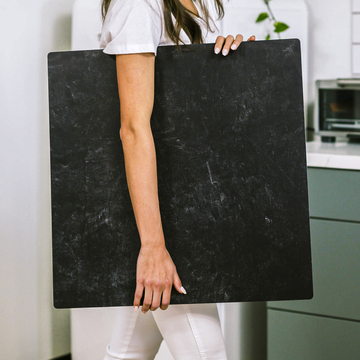Have you ever wondered why some food photos make your mouth water instantly while others fall flat? The secret might not be in the food itself, but in something you barely notice: the backdrop. As a professional food photographer with over a decade of experience, I'm about to share some game-changing insights about photography backdrops that go way beyond "just pick a pretty color."
The Hidden Psychology of Texture
Here's something fascinating: your brain processes food differently depending on the surface it's sitting on. It's not just about aesthetics - it's pure science. Through countless photoshoots, I've discovered that the microscopic texture of your backdrop can actually influence how viewers perceive food temperature.
Picture this: when you photograph a steaming bowl of soup on a slightly textured surface (think fine linen texture), viewers perceive it as warmer and more inviting. Why? The subtle surface variations create micro-shadows that our brains associate with comfort and warmth. On the flip hand, that smooth, glossy surface? Perfect for making your ice cream photos look refreshingly cold.
The Color Temperature Dance
Remember that time your white sauce looked slightly blue in photos? That's not your camera playing tricks - it's the science of color reflection at work. Your backdrop isn't just sitting there looking pretty; it's actively participating in a complex light dance with your food.
Key Color Principles:
- Dark backdrops absorb light, creating dramatic shadows that make food pop
- Light backgrounds bounce light back onto your food, acting like a natural reflector
- The magic happens when you find the sweet spot between contrast and complement
Pro Tips for Perfect Backdrop Selection
- Hot Foods: Choose backdrops that don't conduct heat easily
- Cold Dishes: Select materials that won't show condensation
- Universal Use: Invest in neutral, stable surfaces that won't react with food
Technical Considerations That Matter
Your backdrop is actually a living, breathing surface that responds to its environment. Temperature changes can make it expand or contract, humidity can affect color appearance, and UV exposure can gradually change its properties. Understanding these factors will help you maintain consistent results across shoots.
Getting Started
Ready to elevate your food photography? Begin with these fundamental experiments:
- Test different textures with the same food item
- Observe how light interacts with various surfaces
- Document how different backdrops affect your food's appearance
Remember: Great food photography is a science as much as an art. Understanding the technical side will help you create images that don't just capture attention - they capture imagination.
What backdrop discoveries have you made in your food photography journey? Share your experiences in the comments below!


